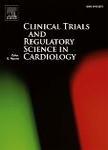版权所有:内蒙古大学图书馆 技术提供:维普资讯• 智图
内蒙古自治区呼和浩特市赛罕区大学西街235号 邮编: 010021

作者机构:Aalborg Thrombosis Research Unit Department of Clinical Medicine Faculty of Medicine Aalborg University Aalborg Denmark Department of Cardiology Aalborg University Hospital Aalborg Denmark Unit of Clinical Biostatistics and Bioinformatics Aalborg University Hospital Aalborg Denmark Department of Cardiology Aalborg University Hospital Denmark
出 版 物:《Clinical Trials and Regulatory Science in Cardiology》 (Clin. Trials Regul. Sci. Cardiol.)
年 卷 期:2017年第25卷
页 面:1-6页
学科分类:1002[医学-临床医学] 100201[医学-内科学(含:心血管病、血液病、呼吸系病、消化系病、内分泌与代谢病、肾病、风湿病、传染病)] 10[医学]
主 题:Anticoagulants Clinical decision support systems Randomised controlled clinical trial Therapeutic drug monitoring
摘 要:Background Vitamin K-antagonists such as warfarin treatment remain the mainstay to prevent thromboembolic events in various conditions. The quality of the treatment is reflected through time in therapeutic (INR) range (TTR) with a threshold at ≥ 70% indicating ‘good quality’;achieving this quality is not trivial. We conducted a randomised controlled trial to assess the impact of decision aiding model on treatment quality in a high quality vitamin K-antagonist treatment setting. Methods We investigated if algorithm-suggested warfarin dosing was superior to standard dosing in a high-quality setting involving self-managing warfarin patients. Patients were initially allocated to either algorithm-suggested warfarin dosing or to standard care treatment, and were crossed over after three months. The trial period was a total of six months, and the primary endpoint was TTR;we also investigated a secondary endpoint of log-transformed INR variability. Results A total of 191 patients contributed to the main analysis with a mean follow-up time of 140 days;75% were males and the mean age was 65 years old. The intervention arm achieved a TTR of 81.6, while the placebo arm attained a TTR of 80.9 (difference [intervention arm minus placebo arm]: 0.67 (95% confidence interval − 2.93 to 4.27). The difference in INR variability was 0.30 (0.14 to 0.47), favouring the placebo arm in terms of lower log transformed variability. Conclusions We found no difference between the two trial-arms in a high-quality warfarin treatment setup. However in general, the model performed similarly as to routine patient self-management care. (*** number: NCT02705976) © 2016 The Authors